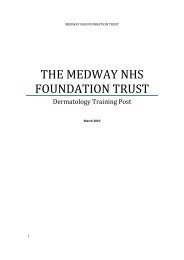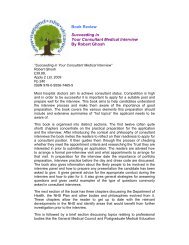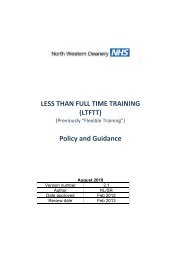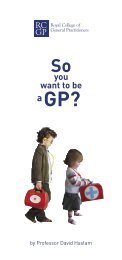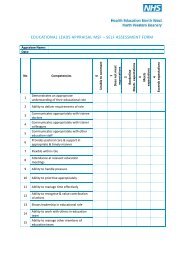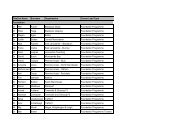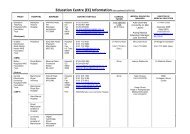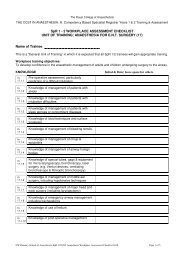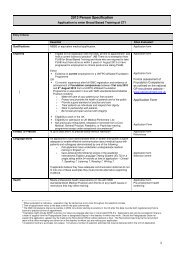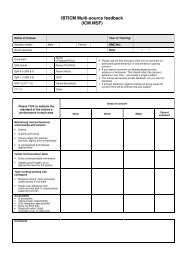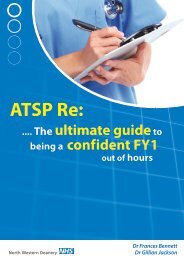Rota Design for 2009 - North Western Deanery
Rota Design for 2009 - North Western Deanery
Rota Design for 2009 - North Western Deanery
- No tags were found...
Create successful ePaper yourself
Turn your PDF publications into a flip-book with our unique Google optimized e-Paper software.
2. Importance of goodrota designi. The benefits of good rota designIt’s recognised that WTD compliance and reduction ofjunior doctors’ hours cannot be achieved purely throughrota redesignHowever good rota design can lead to:● More efficient use of human resource, maximisingservice delivery● More efficient use of financial resource● Maximising education and training potential,safeguarding the quality of medical work<strong>for</strong>ce andfuture consultants● Minimising fatigue <strong>for</strong> a happier, more productivework<strong>for</strong>ce● Minimising the risk of banding appeals and referralsto the Health and Safety Executive (HSE).ii. Penalties of poor rota design– impact upon service delivery, education andtrainingThe greatest impactof August 2004 WTDimplementation wasupon daytimepresence of juniormedical staff.Traditional on callrotas disappeared as a consequence of the SiMAP andJaeger rulings and the need to provide continuedresident 24/7 cover in most specialties led towidespread changes in the way teams were structuredand care delivered.Trusts relied on theimplementation of fullshift work patterns tomeet WTDrequirements andservice delivery needs,however thecomponents of theThe SiMAP judgementconfirmed all time spenton work premisescounted as ‘work’.The Jaegar judgementrein<strong>for</strong>ced SiMAP andconfirmed compensatoryrest must be issuedimmediately.‘WTD triad of patient care’ were given limitedconsideration and subsequently many junior doctorsraised training issues. It was at the SpR grade that theimpact was most significant. An increase in ‘Hutton’numbers was part of the solution, but this led todifficulties with longer term work<strong>for</strong>ce planning. A‘Hutton’ bulge is anticipated as these trainees attainCCT in the near future and there is no correspondingincrease in the consultant work<strong>for</strong>ce.3This approachhighlighted thatthrowing additionaldoctors into a rotamay not always bethe best solution.Poor rota planningmeant some juniorswere working shifts,What was a Huttonnumber?Additional locally fundedWTD SpRs created tosupport 2004 WTDimplementationbeing away from wards and clinics <strong>for</strong> a week at a timeas they worked night shifts and also receivedcompensatory time off. This had an obvious impactupon service delivery but also education and training, asa large proportion of <strong>for</strong>mal and supervised trainingopportunities occurs during the daytime (see cell of 11section).



